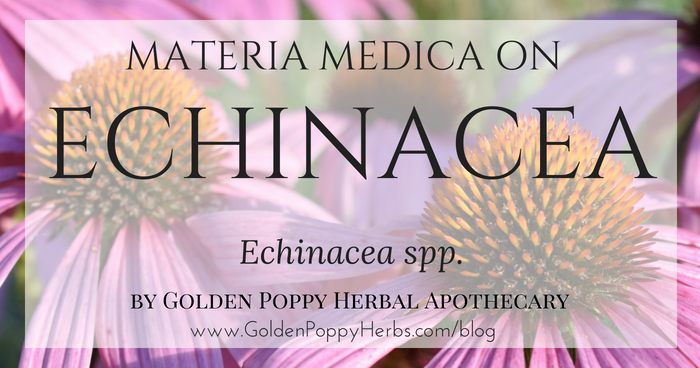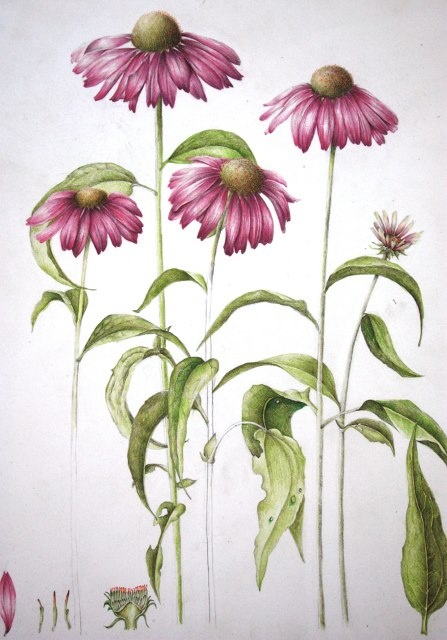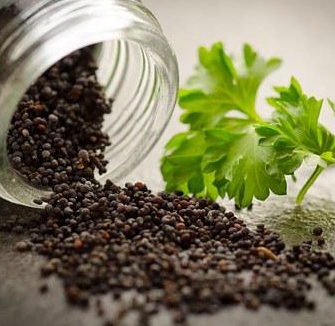
Today Echinacea is one of the most popular herbs used in America. Echinacea is often used to help relieve cold and flu symptoms as well as shorten the duration of the cold. It is also often used to help boost the immune system during the onset of cold season.
Although echinacea is a very popular herb used in today’s cold remedies and was very popular with English pioneers, and early doctors it became less popular with the onset of antibiotics in the 1930s. Just recently it made its comeback, and we love it!
Echinacea was used over 400 years ago by Native Americans to help with common colds, snakebites, toothache, and rabies. It was also used in Native American sweat lodges to help them endure the extreme temperature.
Echinacea is native to the prairies of North America. It prefers full sun, can grow in a variety of soil conditions and has low water requirements. The most common species of echinacea are Echinacea purpurea and Echinacea angustifolia. However, there are nine distinct species that exist and at least 50 hybrids that have been cultivated. Due to its popularity over-harvesting in the wild, especially of Echinacea angustifolia, is causing endangerment to this genus.

MATERIA MEDICA: ECHINACEA
Latin Name: Echinacea angustifolia, E. pallida, E. purpurea
Family: Asteraceae (Daisy Family)
Parts Used: Root, rhizome, leaf, flower, seed
Actions: Alterative, anodyne, antibacterial, anti-fungal, anti-inflammatory (mild), antioxidant, antiseptic, antitumor, antiviral, astringent, carminative, depurative, diaphoretic, digestive, febrifuge, immune stimulant, sialogogue, stimulant, vulnerary
Preparation and Dosage:
- Tea: Making a tea with the flowers and leaves use 1-2 tsp in 12oz of hot water, steep for 15 minutes and enjoy! For a decoction of the roots use 1-2 tsp of echinacea root and simmer for 30 minutes, strain, and enjoy!
- Tincture: 10-30 drops taken by mouth 1-3 times a day.
- Topically: Echinacea can be made into salves, compresses, and washes to help treat and relieve: cuts, boils, burns, hives, infected wounds, tendonitis, venomous bites from snakes and spiders, gangrenous tissue, sties, and carbuncles. Echinacea can also be used in a mouthwash to help treat canker sores, gingivitis, pyorrhea.
Uses: reduce illness, abscess, acne, allergy, blood poisoning, boils, bronchitis, cancer, candida, chicken pox, chronic fatigue, colds, diphtheria, ear infection, eczema, fever, flu, gangrene, herpes, laryngitis, Lyme disease, lymphatic congestion, mastitis, measles, mumps, pneumonia, prostatitis, scarlet fever, sinusitis, smallpox, snakebite, sore throat, tonsillitis, tuberculosis, typhoid, and urinary tract infection.
Cautions:
- People with compromised immune systems (i.e. tuberculosis, HIV) should not use echinacea.
- Echinacea may be used every couple of hours during a common cold but this should only be carried out for a few days.
- Excessive use of echinacea may cause throat irritation, nausea, dizziness, and excessive salivation.
- It may cause a tingly sensation on the tongue, but don’t worry as it is a harmless reaction!!
*As winter starts creeping up stop in the store to get some local echinacea flowers! They won’t be around too long and we just can’t get enough of them!! Imagine snuggling up with a cup of warm tea that your body will love!!
Written by Apothecary Intern Risa Palmer


